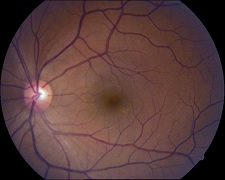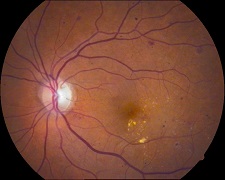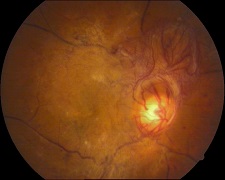Diabetic retinopathy is the most common retinal disease worldwide. Around 15 years posterior to the diabetes diagnosis, 98% of all type 1 diabetics and 75% type 2 diabetics will have some degree of retinopathy, and even earlier if the glycemic control is not good.
On the retinal microvascular structures, glycemic descontrol cause that many of the blood vessels close, preventing enough blood flow to the retina. With chronic low oxygen the retinal cells die, with consequent gradual vision loss. In an attempt to supply blood to the area where the original vessels closed, the retina responds by growing new blood vessels. This is called neovascularization. At this stage the disease is called proliferative diabetic retinopathy.
However, these new blood vessels are abnormal and do not supply the retina with proper blood flow. The new abnormal vesses tend to break easily causing vitreous hemorraghes (internal eye bleeding) and tend to leak as well, causing swelling mainly in the macula (best vision area) with even more visual impairment. Also, they are often accompanied by scar tissue that may cause the retina to wrinkle or detach.
As the disease progresses, diabetic retinopathy symptoms may include:
In all cases, if the diabetic retinopathy is not treated, the final outcome is total blindness.
The treatment is not only ophthalmological but must be systemic as well. The best results when trying to slow the progression of the disease are obtained when the opthalmological treatment is combined with a good glycemic control. The treatment include panretinal photocoagulation with laser, intravitreal injections of antiangiogenics and vitrectomy surgery, according to the severity of each case.



PERFECT VISION offers the latest technology for the correction of this visual problem.